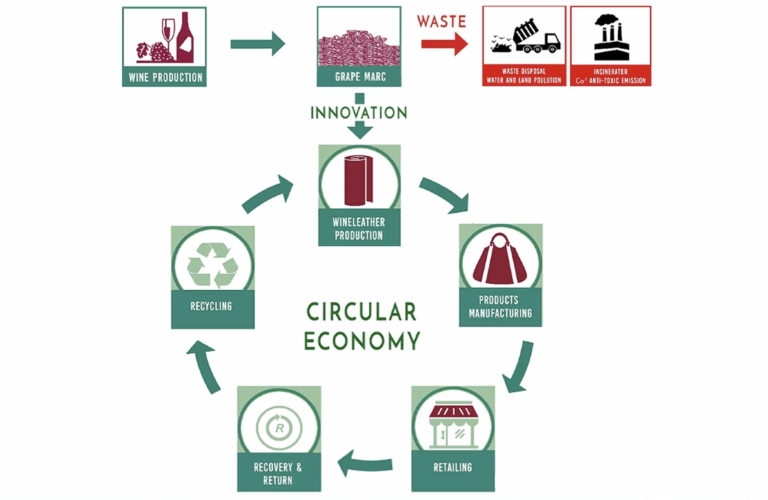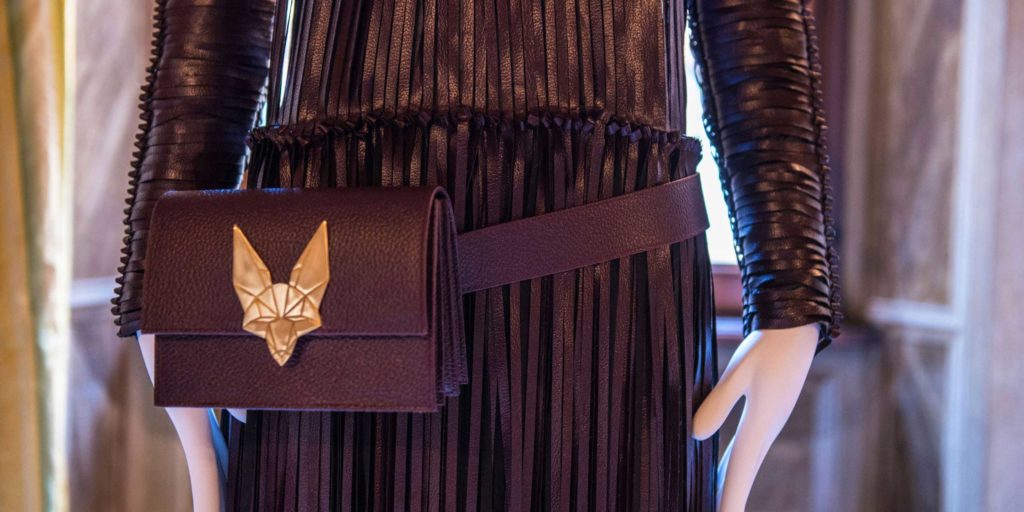Wine leather, also called grape leather, is made by Vegea, an Italian technology company. The basic idea behind the project is to create a 100% recyclable, vegan leather alternative that can be used in the Italian and international fashion industry. The development started several years ago and is soon ready to be tested by the first major brands. However, it is still some time until the industrialization, according to the manufacturers.

By loading the video, you agree to YouTube's privacy policy.
Learn more
Wine leather
Wine leather is soft, smooth, stable, 100% sustainable and can be recycled. It almost feels like leather and can also be processed adequately. Wine leather is 100% vegan, no animals are harmed and no animal products are used during the production process.
The main ingredient of wine leather are waste products of Italian wine production. Core and shell are processed through a chemical process developed by Vegea and form the basis of this material. The exact process is a business secret, but later I will go deeper into the production.
About Vegea
The startup company founded in 2018 by the Milan-based architect and founder Gianpiero attracted a great deal of attention in the sustainable fashion sector last year.
Gianpiero has already received one or two awards with the aim of creating a sustainable material for the fashion industry. Start & Cup Award 2015, Start & Re-Start 2016, PETA innovation award 2017 and the Global Change Award 2016 from H & M.
By the way, fashion giant H&M’s goal is to use only 100% sustainable materials by 2030 to change the fashion industry.
The startup was financed by the European Union Horizon in 2018 with more than 560,000 euros and has so far received a total financing of over 800,000 euros.
According to Vegea, the project is still in the start-up phase and the planned industrialization process is expected to take place in 2022. The company plans to sell 4,200,000 sqm of wine leather / year with the launch within the first four years.


Production process
First, a part of the grape marc (skin and stalk), which is recycled from the residues of the Italian wine industry, dried. Thereafter, bio-oil is obtained from the seeds, which is polymerized by patented methods.
In combination with the contained fibers, an innovative manufacturing process and the addition of chemical substances create a material that is supposed to be very similar to animal leather.
It uses no oil, is 100% sustainable and contains minimal non toxic chemical reagents. The production hardly consumes additional water, since the existing one is used again and again.

Is it sustainable?
26 billion liters of wine are produced worldwide every year.Italy is the top leader with 18% of the world’s total wine production. With these quantities one can imagine how much “waste” remains. As a rule, 10 liters of wine, 2.5 kg of “waste” (consisting of the shells, cores, etc.) are produced during production, from which 1 square meter of wine leather can be produced.
That would be 2.6 billion square meters of wine leather every year, just by using wine production “waste”.
- low environmental impact
- renewable raw material
- no polluting substances
- no waste of water
- low production costs

Products
At the moment there are only a few wine leather products. So few, that it is not worth pointing out. Due to the cooperation of Vegea with H&M, one can strongly assume that there will be a lot to come here in the near future. A lot of vegan clothing brands will pick up this material very soon.
Furthermore, DAN & MÉZ is also in the process of developing one or the other product, which will probably be available soon.

Conclusion
This material will certainly be known in the mainstream and will eventually play a major role in the fashion industry. It feels extremely soft and has a similar structure as animal leather, is 100% sustainable and vegan.
Unlike Piñatex, no petroleum-based paints and varnishes are used for the top coating of wine leather. A very big aspect that speaks for wine leather, however, Ananas Anam, the company behind Pinatex is already working on a solution for a bio-based coating method.


